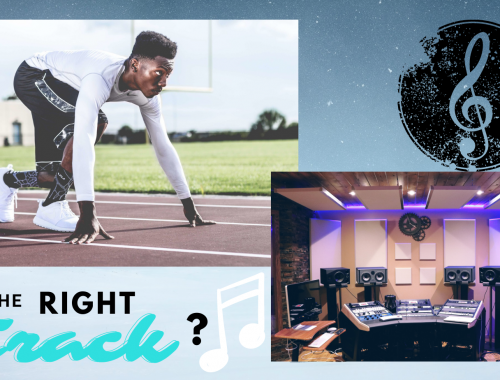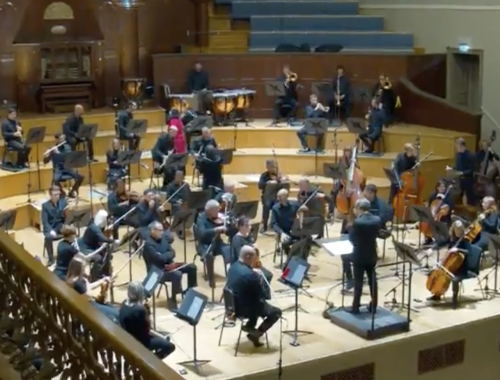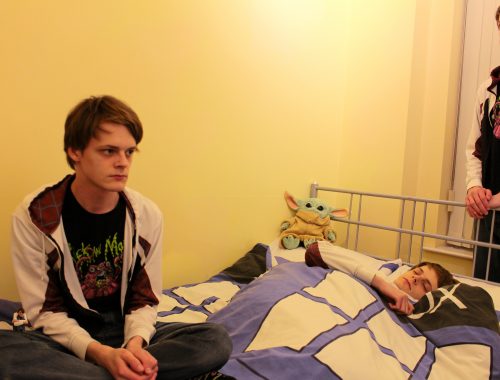A new opportunity!
This blog will take look back on my early experiences on my work placement with Matt Weir using the Gibb’s Reflective Model to structure my analysis of my experiences.

On October 4, the first official day of my placement, I got to shadow Matt as he worked on unfinished songs and watched him act as both a producer as well as a mixing engineer. Getting to see him at his workstation exposed me to high-end equipment that is often used in professional practice, such as Telefunken and Neumann microphones and a range of Native Instruments and Waves plug-ins. Seeing how Matt applied these pieces of equipment to his specific projects inspired me to ask questions and seek out as much extra information as I could, such as why he chose to compress one track harder than another, why he decided to put a reverb plug-in directly on a single track rather than creating an auxiliary track which is fed by multiple tracks instead. Matt was able to answer all my questions in detail, and the experience and information I gained from this first day alone influenced many of my technical and creative decisions in future weeks during my own musical projects, particularly my decisions in relation to track compression and use of plug-ins.
Watching Matt work with clients was another excellent opportunity for me to gain a clearer insight into professional practice and the importance of having strong interpersonal relationships with clients. On October 11, my second day of placement, Matt worked with local pop musician Sasha Samara to finalise tracks that they had been collaborating on. This was the final meeting before the tracks would be published, and I was able to sit in on their final listen of each track, as they discussed what changes needed to be made. At this point in the process, Matt was still adding new ideas to the tracks, such as time-based effects (delays and reverbs in particular) and was experimenting with the volume of different sections of the song. These changes were new to Sasha by the time of this final meeting, and after she listened to each track and gave feedback, I was able to shadow Matt as he altered each track to fit the changes she suggested in her feedback. Getting to sit in on this process and watch an industry professional take on feedback and apply the necessary changes accordingly was a valuable experience for me, as it helped me to appreciate the importance of understanding and working with feedback, both in my other university modules and in my personal musical endeavours and collaborations, to ultimately improve a track and allow it to reach its full potential. I learned some particularly eye-opening things about the interpersonal and professional relationship between producer and client, as Matt immediately applied every change that Sasha suggested and gave her as much time as she needed to listen to the changes. He consistently reassured her that her opinions were valuable and worth trying out. On certain occasions, Matt disagreed with her suggestions, but made the changes nonetheless and compared them with his own decisions, describing in straightforward and respectful terms exactly why he favoured his own creative decision over hers. This allowed the creative process to run smoothly and effectively, as Matt ultimately gave Sasha full control over her own creative project, yet was still able to communicate his own ideas and explain them clearly. As I often work collaboratively with other musicians, in terms of both song-writing and mixing, this was an inspiring experience, and I noticed a tangible improvement in how clearly and effectively I communicated with some of my collaborators. In particular, when working with fellow musician Jake McCrea of Moon Landing on one of his tracks as a producer and mixing engineer, the next meeting we had together ran a lot of smoother and resulted in the majority of a song being completed in one session. Matt’s professional demeanour and strong communication skills informed and inspired me to communicate my ideas firmly and clearly, but with an open mind, and Jake later told me that he really enjoyed the collaborative process and felt that I came to the session with excellent ideas, while also taking his own ideas fully on board.
Finally, I worked with Matt on October 25 to set up a vocal session with one of his clients. This required me to come to the studio well in advance of the client to set up. Similarly to the induction day, Matt talked me through the set-up and equipment of the studio, but rather than showing me around the studio while it was not being used, like the first day, the studio had now been primed for a working day, which allowed Matt to go into a lot more detail in terms of what exactly is involved in a vocal recording session. He walked me through the signal chain, starting from the microphone and finishing at the Digital Audio Workstation. The use of two microphones to record vocals was a new technique to me. Matt explained in detail how this can speed up the process by eliminating the need to take one microphone down and set up another during the session, making the experience a lot more efficient for the vocal artist. I ended up using this technique when recording piano for a personal project, where I needed three options for room size on one performance, so decided to set up three microphones at different distances, giving me the choice between three different room sounds in post-production, which made the process extremely efficient. Working with Matt on this session really made me appreciate the importance of efficiency, particularly for the artist themselves.
Pages: 1 2
Is Drama Just All Fun and Games?
Time Is Everything
You May Also Like

Learning from experience- Am I on the right track?
28 November 2021
In at the Deep End: Recording an Orchestra
26 November 2021
